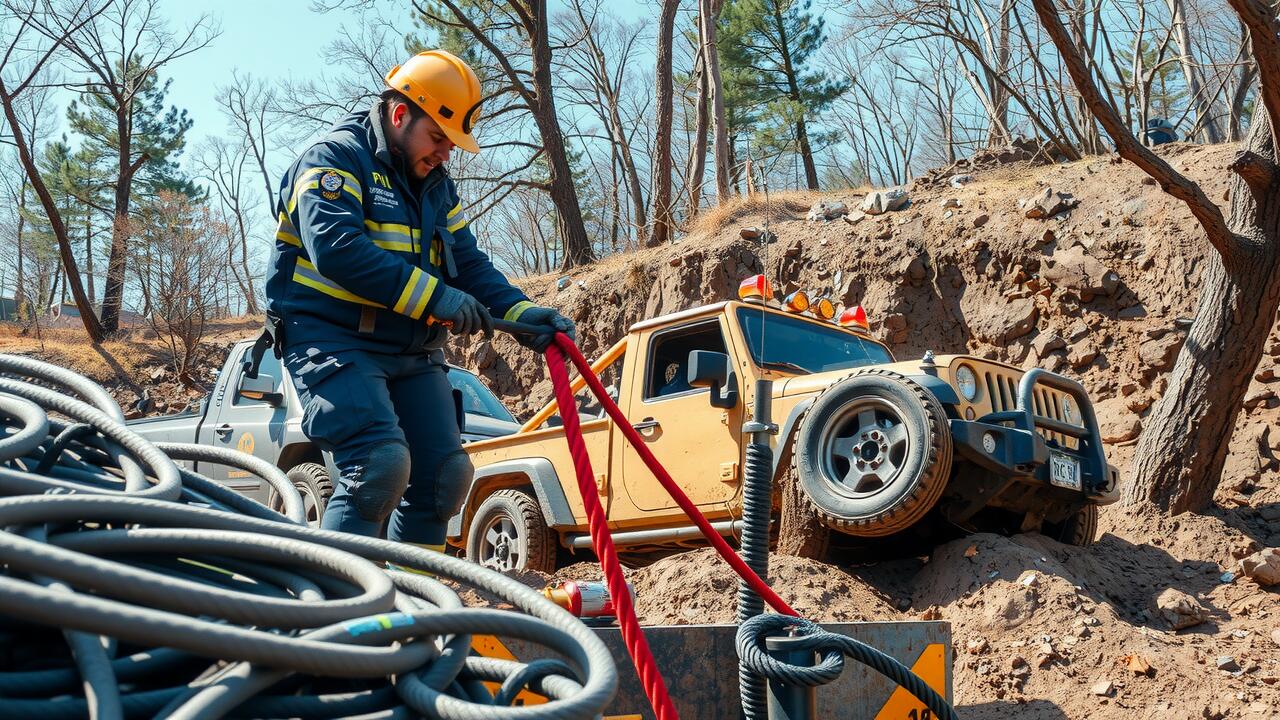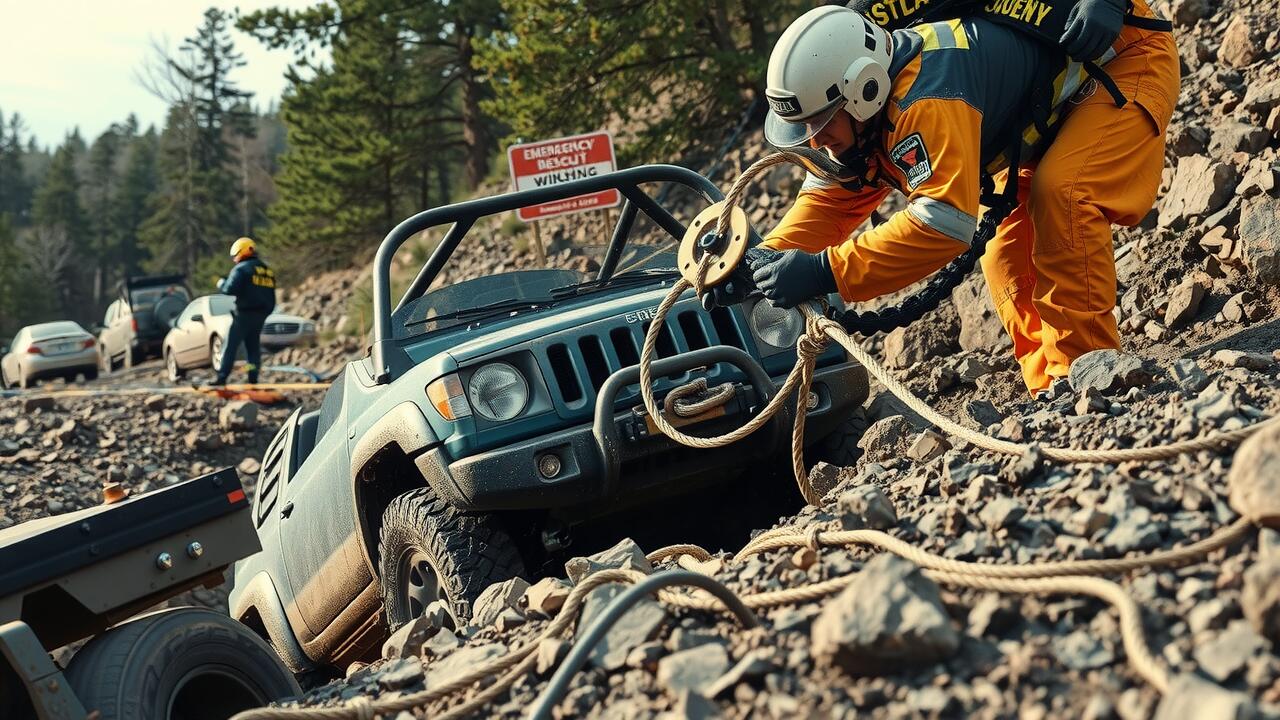
Training and Education for Winching
Proper training and education are essential for anyone involved in winching and extrication in Morrisville. Understanding the mechanics of winching equipment, the load limits, and the types of knots used can significantly reduce the risk of accidents. Hands-on training sessions help participants gain the practical experience necessary for effective teamwork in field scenarios. Engaging in simulations and drills allows individuals to familiarize themselves with equipment and techniques specific to diverse extraction situations.
In addition to hands-on training, accessing resources such as instructional videos, manuals, and experienced mentors can enhance skill development in winching and extrication. Regular workshops and refresher courses help keep skills sharp and ensure that techniques remain current with industry standards. Collaborating with local organizations can provide opportunities to learn from real-world experiences, further bolstering a team's preparedness for emergencies.
Resources for Skill Development
Access to quality resources is essential for skill development in winching and extrication. Training programs offered by local fire departments and rescue organizations provide hands-on experience alongside theoretical knowledge. Online platforms and forums also play a crucial role by connecting professionals who share best practices. Instructional videos and manuals specific to winching and extrication techniques are available and can serve as supplementary materials.
Workshops and seminars by industry experts offer opportunities for personnel to familiarize themselves with the latest equipment and methods. Participation in real-life scenarios during exercises enhances skill retention and builds confidence among team members. Engaging in collaborative training sessions with neighboring departments can further expand the knowledge base, allowing for shared experiences and strategies.
Environmental Considerations in Morrisville
Morrisville, North Carolina, features a diverse landscape that presents unique challenges for winching and extrication operations. The area is characterized by wooded regions, wetlands, and varying topography. Proper assessment of the environment is crucial to ensure safety and success while conducting these operations. Recognizing how soil types and weather conditions can affect traction and stability plays a vital role in planning effective strategies.
Local wildlife and ecological sensitivities also need consideration during winching and extrication procedures. Crews should remain aware of the possibility of encountering protected habitats or species while operating in natural areas. Understanding these environmental factors helps prevent disruptions and ensures compliance with regulations. By evaluating these elements, teams can execute their tasks more efficiently and responsibly while enhancing safety for both personnel and the surrounding environment.
Adapting Techniques to Local Conditions
Adapting techniques for winching and extrication to local conditions is essential for effective and safe operations. In Morrisville, the variety of terrain, from wetlands to upland areas, presents unique challenges. Understanding the specific characteristics of these environments allows responders to choose appropriate equipment and techniques. For instance, in wetland areas, responders may need to consider the potential for soft ground, which can affect the stability of vehicles and the performance of winching equipment.
Local weather patterns also play a crucial role in determining the right approach for winching and extrication. Rainfall can lead to slippery surfaces, while dry conditions might create dust clouds that can obscure visibility. Training teams to assess these factors ensures they can adjust their strategies accordingly. Tailoring winching and extrication techniques to the specific environmental conditions in Morrisville not only enhances success rates but also promotes the safety of team members and those in need of assistance.
Team Coordination during Extrication
Effective team coordination during winching and extrication is crucial for ensuring both the safety of the crew and the success of the operation. Each member must have a clear understanding of their role and responsibilities. Regular practice drills can enhance familiarity with equipment and procedures. This preparation fosters confidence and efficiency, allowing the team to respond swiftly under pressure.
Communication plays a pivotal role in the coordination process. Establishing clear protocols for signaling and reporting can minimize misunderstandings during critical moments. Teams should utilize both verbal and non-verbal cues to maintain awareness of evolving conditions. By prioritizing coordination and communication, teams can improve their overall effectiveness in winching and extrication scenarios.
Importance of Communication Among Crew Members
Effective communication among crew members is critical during winching and extrication operations. Each team member plays a specific role, and understanding these roles enhances coordination and efficiency. Clear verbal instructions and signals can help prevent misunderstandings that might lead to accidents or delays. Establishing a predefined communication protocol before operations begins can further streamline interactions among the team.
Trust is also essential in fostering a positive communication environment. Team members must feel comfortable voicing concerns or asking questions without hesitation. Encouraging open dialogue about the challenges faced during winching and extrication ensures that every crew member is on the same page. Regular debriefings and practice drills can reinforce communication skills and build camaraderie within the team, ultimately leading to safer and more effective operations.
FAQS
What is winching in the context of extrication?
Winching is the process of using a winch—an apparatus that pulls in or lets out a cable or rope—to assist in the removal of vehicles or objects that are stuck or in difficult positions during rescue operations.
Why is training important for winching and extrication?
Training ensures that responders are knowledgeable about the equipment, techniques, and safety protocols necessary for effective and safe winching and extrication, reducing the risk of accidents and improving overall effectiveness during operations.
What environmental considerations should be taken into account in Morrisville?
In Morrisville, responders should be aware of local terrain, weather conditions, and environmental regulations that may affect winching and extrication operations, ensuring they adapt their approaches accordingly.
How can teams improve coordination during extrication missions?
Teams can improve coordination by establishing clear communication protocols, conducting regular training exercises, and assigning specific roles to each team member to ensure everyone understands their responsibilities during an operation.
What resources are available for skill development in winching and extrication?
Resources for skill development may include local training programs, online courses, instructional videos, and workshops offered by fire departments or rescue organizations focused on winching and extrication techniques.
